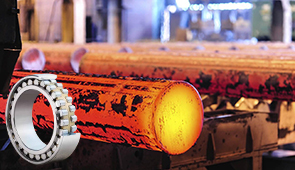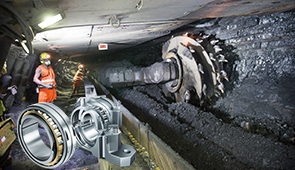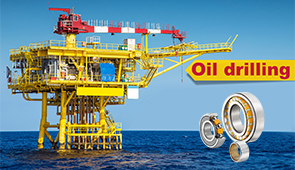Everything You Need to Know About Lubricating Oil and Its Uses
Lubricating oil plays a pivotal role in ensuring the efficiency and longevity of mechanical systems, from automotive engines to industrial machinery. This essential fluid minimizes friction, reduces wear and tear, and enhances the performance of countless moving parts. But what exactly is lubricating oil, and how does it work? Understanding its composition, properties, and diverse applications is crucial for anyone looking to maintain equipment reliability and optimize operational performance. This article dives into the specifics of lubricating oil, uncovering its importance, common uses, and key considerations for selecting the right type for various needs. Whether you’re an industry professional, a vehicle owner, or simply curious, this guide will provide valuable insights into one of the most vital components of modern machinery.
What is lubricating oil?
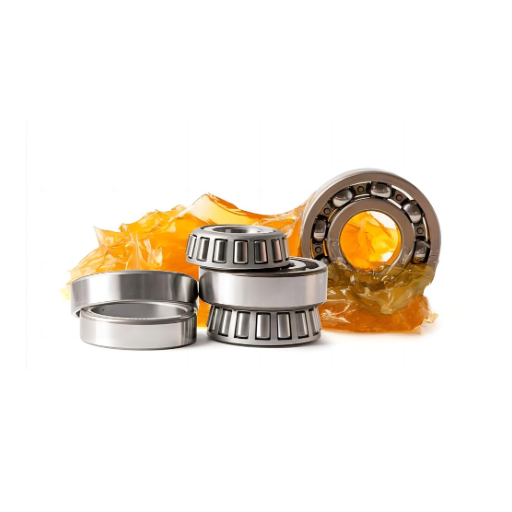
How lubricating oil is used in everyday applications
Lubricating oil refers to those substances that reduce friction, prevent wear, and ensure smooth operations in the course of contemporary daily life situations. Perhaps one of the most widely accepted uses is in passing lubricating oils between engine moving parts, thus avoiding metal-to-metal contact, heating operations of these parts. Lubricating oil, with the means of optimum lubrication, further innovates their working and hence the life of vehicles.
Another useful application is in industrial machines. Lubricants are used to ensure that equipment operating in industries such as manufacturing, construction, and generation is efficient and reliable. Lubricating oil is applied to bearings, gears, and hydraulic systems to alleviate operational strain and prevent breakdowns. These processes are essential to reduce downtime and ensure uninterrupted production.
Lawnmowers, sewing machines, and bicycles are among household implements that depend on lubricating oils for their efficient running. They enable mechanisms to operate smoothly and resist rust or corrosion with the passage of time. Whether in large-scale industrial operations or small personal tools, lubricating oil is a principal maintenance tool to enhance working, efficiency and durability in almost every field of life.
The role of lubricating oil in reducing friction
Lubricating oil acts to reduce friction between surfaces by creating a thin protective oil film. This protective film prevents surfaces from coming into direct contact with each other. Consequently, this resistance is lowered, and so is wear on the parts. Thus, the oil imparts smoothness to machines in operation and extends the working life of components by reducing mechanical stress over time.
The primary way frictional forces can be reduced in an environment dominated by oil is by controlling the temperature-thixotropy. At the right viscosity, the oil will stick to the surfaces, yet never be so viscous as to impede movement, or so thin as to lose its strengths. The lubricating oils may also comprise oils with additives like anti-wear, anti-oxidant, anti-rust, or corrosion inhibitors, each playing its part in preventing damage and protecting the equipment in different temperature and pressure conditions.
Frictional forces act against energy conservation; therefore, friction must be reduced to save energy. The less heat produced due to friction, the more efficient the operation of any system. This conservation of energy is tied directly to operational costs and is important for industrial machines, vehicles, and even home appliances. Hence, great attention should always be paid to the correct application of lubricating oil in engineering, maintenance, and mechanical service.
Key differences between lubricating oils and other oils used
Lubricating oils are specialized substances designed to reduce friction and wear between moving parts. In contrast, other oils, like cooking oil, are used in food preparation, or technically, fuel oils are burned. The difference mainly exists in the formulation and the properties that are particular to one application. However, lubricating oils are supposed to have a certain viscosity grade and certain additives for thermal stability and corrosion resistance to suit mechanical systems, while oils intended for other applications may lack these attributes.
Another distinction is that lubricating oils contain specialty additives. These additives include detergents, anti-foam agents, and anti-wear materials that promote performance under extreme conditions. For example, a lubricating oil in automotive engines has to resist high-temperature degradation and prevent sludge formation, something not needed in very basic oil applications such as hinge lubrication or cooking.
In addition, the standards for lubricating oils are much more stringent than those for other oils. This is, in contrast, to the less rigid performance of other oils, indicating their less careful use in practically-oriented life. These factors coalesce to prove the vital importance of selecting the right type of oil for a job to ensure operating safety, efficiency, and system longevity.
Types of lubricating oil
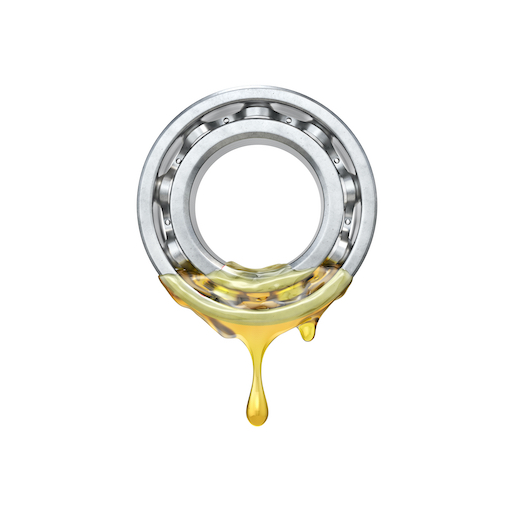
Understanding mineral oil and its applications
Mineral oil is a petroleum-grade, refined product obtained through a distillation process that segregates it into specific hydrocarbon chains suited for various industrial and mechanical applications. Its versatility stems from several factors, including stability, relatively low volatility, and effectiveness within a broad temperature spectrum. This essentially makes mineral oil indispensable in the realms of hydraulic systems, gear mechanisms, and base oils for many lubricants.
Modern mineral oils sometimes use additive technology for improving performance and meeting stringent industry standards. In hydraulic systems, for instance, mineral oil effectively transmits power, remains stable in viscosity under varying pressure, and reduces wear of system components. In gears, it aids smooth operation and offers protection from metal-to-metal contacts under high-load conditions.
Moreover, highly refined mineral oils find applications in sectors other than mechanical systems, such as the pharmaceutical and food industries, where ultra-pure grades are deployed as lubricants, coolants, and processing aids under strict regulatory guidelines. This versatility underlines the essential role that mineral oil plays in various industries, demonstrating its relevance in both traditional and newer applications.
The benefits of vegetable oils as biodegradable alternatives
In other words, vegetable oils have become viable biodegradable alternatives in many applications, especially considering the environmental issues raised by the use of non-renewable and non-biodegradable resources like mineral oils. Their characteristics, like renewability, biodegradability, and low toxicity, make them fit for various industries. Below is a detailed explanation of five advantages of vegetable oils as biodegradable alternatives:
- Environmental Sustainability: Vegetable oils are obtained from renewable plant sources, thus ensuring sustainability as compared to petroleum-based oils. Their production diminishes the dependence on fast-depleting fossil resources, thereby supporting global measures being taken to curb such degradations.
- High Biodegradability: Based on the studies of biodegradability of vegetable oils, any single vegetable oil showed biodegradability greater than 90% in 28 days under standard testing conditions. This bioproperty reduces its ecological impact when released into the environment.
- Low Ecotoxicity: Being natural, vegetable oils hardly have any ecotoxicity because no harmful additives are present in them. Thus, they pose very little risk to ecosystems, aquatic life, and soil microbes compared to many of the petroleum products used as lubricants.
- Greater Lubricity: Inherent to vegetable oils are excellent lubricity brought in by a high viscosity index and strong film-forming properties. This property reduces wear and friction in mechanical systems, thus enhancing energy efficiency and equipment life.
- GHG Emission Reduction: Since vegetable oils are considered carbon neutral, they play a great role in reducing GHG emissions. The carbonisation cycle of vegetable oils is short. Carbon dioxide absorbed by plants during their growth compensates for the emission when these oils are eventually used. Hence, vegetable oils have a much reduced overall carbon footprint when compared with those derived from fossil sources.
That’s how these benefits argue for vegetable oils being the greener alternative to remain under consideration in the industrial, automotive, and agricultural sectors while conforming to the present sustainability issue.
How do lubricating oils enhance energy efficiency?
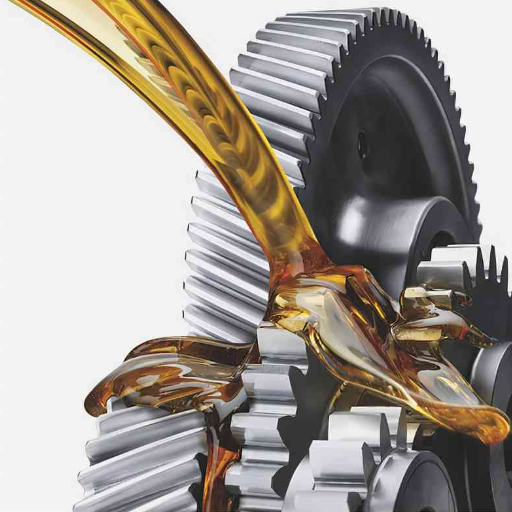
The impact of oil additives on engine oil performance
The improvement of performance, durability, and efficiency of engine oils is a major role of oil additives. These chemical compounds are specifically formulated to alter the characteristics of the base oil and to counteract some problems related to engine performance that occur in the course of engine running. With the use of additives in oil, manufacturers can guarantee lubricants that, under extreme working conditions, resist wear, reduce friction, and conserve power to the utmost. The effectiveness of an engine oil will depend on the quality and combinations of additives used in preparing it.
- Anti-Wear Agents: Wear-reducing additives such as zinc dialkyldithiophosphate (ZDDP) work by first creating a protective film on metal surfaces inside an engine. The film reduces abrasive action through direct metal-to-metal contact, thereby protecting engine wear from extreme pressures.
- Detergents: Detergents maintain engine cleanliness by neutralizing acidic by-products of combustion and preventing deposits from being laid down. Calcium sulfonates and magnesium sulfonates are typical detergent agents.
- Dispersants: Dispersants keep sludge, soot, and contaminants suspended in the oil, so these impurities will not coalesce into deposits. Through this action, the dispersants provide a cleaner engine, thus preserving its performance and efficiency.
- Viscosity Index Improvers: These additives improve the viscosity stability of an oil over a wide range of temperatures. Viscosity index improvers, typically polymeric substances, help engine oils to stay neither too thick nor too thin in the cold or in the hot operating temperatures, respectively, ensuring good lubrication.
- Antioxidants: These are used to prevent oxidation of engine oil and consequently to turn into acids, sludges, and varnishes that hamper the performance of the oil when exposed to high temperature and oxygen. Amine-based antioxidants and phenolic antioxidants are some of the common antioxidants that are introduced to prolong oil life.
Each of these additives contributes to the maintenance of energy efficiency and the increase in operational life of oil and engine components. Through careful formulation, modern engine oils conform to stricter and stricter performance criteria while still addressing the needs of widely varying operational environments.
Reducing wear and tear with the right lubricant
The appropriate lubricant should be selected to minimize wear at the mechanical interfaces, alright? Such conditions are said to be special in cases where heavy load and/or high temperature are involved. By lubricants being barriers, the opposing surfaces see very little metal-to-metal contact that would potentially accelerate fatigue and cause premature failure of the components. With advances in the art of lubricants, quite sophisticated base stocks and additives exist that impart enhanced properties to the lubricant, such as the ability to resist extremely high pressures, oxidation, and wear.
For example, zinc dialkyldithiophosphate (ZDDP) is one of the chief anti-wear additives used, forming a protective sacrificial film on metal surfaces to diminish frictional losses under high loads. Data from recent investigations indicate that by the utilization of synthetic lubricants with optimized viscosity grades-such as SAE 0W-20 for better fuel efficiency-mechanical energy dissipation could be drastically reduced without sacrificing adequate engine protection. The implementation of a regular oil analysis program would also allow the operator to monitor wear debris and oxidation levels, information that can then be used to develop strategies incorporating predictive maintenance that extends equipment life and reduces unplanned downtime.
By blending optimal lubricant formulation with evidence-based techniques, we are able to have industries with top reliability, high operational efficiency, and extremely long asset performance.
Optimizing energy efficiency in internal combustion engines
Energy efficiency in ICEs can be enhanced through a combination of technological advancements, improvements in operational methods, and strict adjustments by performance data. One very important factor is fuel optimization, whereby an exact amount of fuel is injected directly into the cylinder, thus facilitating better combustion, meaning more energy is utilized in performing work rather than being wasted. Variable valve timing technology further reduces energy losses by adjusting valve timing to suit operating conditions.
Reduction in friction in engine moving parts is also significant. This can be done by selecting materials in conjunction with low-friction coatings or by using synthetic lubricants with the least viscous qualities. This increases mechanical efficiency and fuel economy.
The thermal aspect is equally important, as it involves maintaining operation at the most favorable temperatures to maximize energy conversion and prevent energy losses due to heat dissipation. Advanced cooling systems and thermal barriers have all proven to increase engine efficiency significantly under harsh conditions. Turbocharging and downsizing approaches allow smaller engines to generate the same power as their larger counterparts, thereby cutting fuel consumption and greenhouse gas emissions.
The latest ICE developments, benefiting from computer control and real-time data analysis combined with machine learning, are now able to carry out a very fine calibration of the engine to ensure that maximum efficiency is realized under all different load and speed conditions. Therefore, further research and development in these fields are necessary to improve energy-efficient internal combustion engines under stringent environmental laws.
What are the most important additives in lubricating oils?
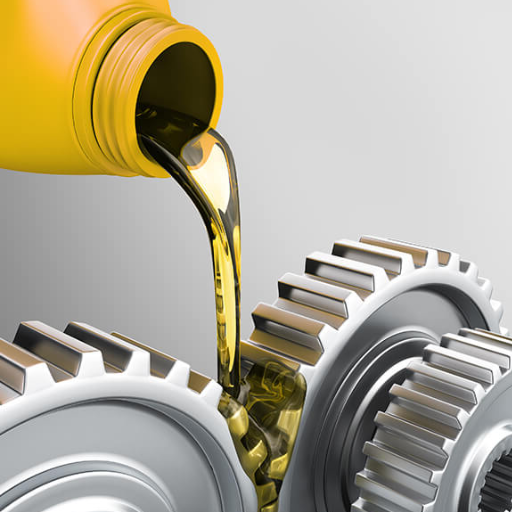
How detergents and anti-wear agents work
Detergents in lubricating oils are important in engine cleanliness. They neutralize acidic combustion by-products and prevent deposition in engines. These compounds are usually made from metallic salts such as calcium or magnesium sulfonates, which are intensely cleaning in nature. The detergent molecules react chemically with contaminants, i.e., residues of combustion and oxidation products; hence, the contaminants get dispersed in the oil matrix with a view to avoiding the formation of sludge and clogging.
An anti-wear agent builds a barrier of protective film on the surface of metals, decreasing metal-to-metal contact during high loads or in an environment of extreme pressure. Among the commonly used anti-wear additives is zinc dialkyldithiophosphate (ZDDP). In the presence of heat and pressure, zinc dialkyldithiophosphate decomposes to form a phosphate glassy film, which prevents wear and surface damage by acting as a barrier. This mechanism prolongs the life of engine components like camshafts, lifters, and gears against harsh operational conditions.
State-of-the-art research into lubricant technology has been aiming to improve the formulations of detergents and anti-wear agents to suit modern engines. This includes improving thermal stability and performance under ultra-low viscosity oil conditions so as to save energy while conforming to stricter environmental regulations.
The role of corrosion protection in oil formulations
The attribute of corrosion protection is very important in oil formulations to give protection to engine components from exposure under poor operational conditions. Efficient corrosion inhibitors in oil formulations deposit a strong protective coating on metal surfaces to prevent moisture, acids, and other contaminants acting as oxidizing agents from causing corrosion. These additives become imperative when the engines operate under high temperatures, a variety of humidity levels, or periods of storage. Some key points and advantages of corrosion protection in oil formulations are listed below:
- Prevention of Rust: Corrosion inhibitors prevent rust formation on ferrous metal surfaces, particularly in engines or machinery subjected to condensation or in frequent contact with water.
- Acid Neutralization: Some oil formulations contain inhibitors that neutralize acidic by-products resulting from the fuel combustion or contaminants, thereby avoiding the acid attack on metal surfaces.
- Barrier Formation: Corrosion inhibitors form an invisible protective layer mainly through adsorption over the metal surface to reduce direct contact with corrosive agents like oxygen and sulfides.
- Increase in Service Life of Components: By retarding the corrosion rate, these formulations increase the service life of very important engine components such as bearings, pistons, cylinders, etc., thus saving on maintenance.
- Multi-Metal Compatibility: Modern corrosion inhibitors are capable of affording protection to a wide range of metals, including steel, aluminum, and copper alloys, to give broad-spectrum protection to a variety of engine materials.
According to recent research carried out in this Industry, advanced corrosion protective agents can achieve a slowing down in metal surface degradation rates by up to an impressive 40%, thereby drastically improving the durability as well as operational efficiency of engines. These developments have brought to light the importance of corrosion-resistant oil formulations to help maintain the integrity of systems critical in automotive, industrial, and marine applications.
Understanding oxidation inhibitors and their importance
Oxidation inhibitors are perhaps the foremost specialized chemical compounds that act against or slow the oxidation processes in lubricants, oils, and other fluids. Oxidation, being an interaction between oxygen and the base fluid, results in acidic by-products and sludge formation, which could degrade machinery and system performance. Making oxidation inhibitors within formulations helps promote the longevity and efficiency of lubricants, allowing them to continue performing their function in demanding working conditions.
From my point of view, the importance of oxidation inhibitors lies in their effects in circumventing long-term damage induced by oxidative degradation. Without these additives, all vital systems, from automotive, industrial, to marine applications, would be subject to rapid wear, higher upkeep costs, and lower reliability. These inhibitors act by stabilizing the lubricants and mitigating the formation of corrosive acidic compounds so that less disruption occurs and the machinery operation is smoother and extended.
Moreover, I think that the use of optimization strategies for oxidation inhibitors is very important where exposure to extreme temperatures and pressures is evident. This would mean that those conditions can accelerate oxidation and thus cause greater antagonism with systems, compromising their ability to serve in their appointed tasks. Optimization of the inhibitor formulations provides cost advantages from costly equipment repairs and replacements while efficiently performing in the most demanding application areas. This clearly illustrates the value oxidation inhibitors have in maintenance today.
Why is oil analysis crucial for maintenance?
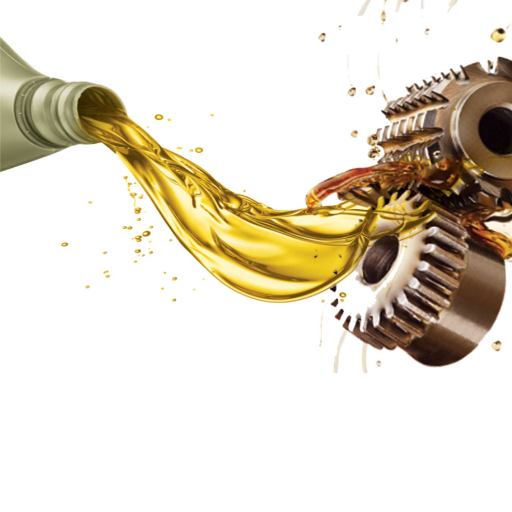
Detecting contamination in used oil
Contamination detection in used oil represents an important maintenance check in ensuring the machinery operates at optimal performance and avoids unscheduled downtime. Contaminants like water, fuel, dirt, and metal particles may bring about an alteration in lubrication performance, thus hastening the wear and tear of components. Contaminants can be detected to trace levels by advanced oil analysis techniques, including atomic emission spectroscopy and Fourier-transform infrared (FTIR) spectroscopy.
For instance, water can cause emulsification, corrosion, and breakdown of oil additives, while dilution with fuel will lower oil viscosity and film strength. Dirt and particulate matter beyond the ISO cleanliness level cause abrasive wear, especially in high-pressure systems. Therefore, precise measurement tools and standards of ISO cleanliness must provide companies with workable intervention limits.
Modern oil analysis programs use cloud-based monitoring systems to combine real-time data with historical trends to provide deeper diagnostics. Such integration empowers an operator to diagnose a root cause, check the likelihood of seal failure, poor filtration, or other systems, and implement corrective measures before things go wrong. With such technology, the companies extend the lives of their most critical assets and create operational cost-efficiency and sustainability in all their industrial applications.
Predicting wear and tear through oil analysis
Oil analysis has now become the primary element in predicting and basically ushering in wear in machinery, allowing the engineer to identify problems before a failure. Analyzing the chemical and physical properties of oil, including characteristics such as viscosity, oxidation, or the presence of wear metals like iron, copper, or aluminum, helps determine the state of the internal components. Advanced spectroscopic analysis, along with particle count data for contaminants, would show their exact types and quantities as clues to particular wear mechanisms.
Hence, an increase in iron particles is usually caused by abrasive wear due to a lack of lubrication or misalignment of components, whereas oxidation increases might be indications that operating temperature thresholds have been exceeded. Oil analysis goes way beyond the traditional means when coupled with some of the recent advances in machine learning algorithms and IoT-enabled sensors in system integration, allowing real-time monitoring coupled with the history data for operators to calculate the wear rates fairly well and predict the remaining useful life (RUL) for their machine components with precision.
This, in effect, foils unscheduled downtime and thereby reduces costs accrued through over-lubrication and unnecessarily early replacement of components. Bringing the right data and predictive analytics together is a giant leap towards the evolution of proactive maintenance, further confirming the great importance that oil analysis holds in sustaining asset reliability and performance.
Extending the life of metal surfaces with regular oil analysis
Lubricating oils have a key influence on how long metal surfaces in industrial equipment will last. In a matter of a few hours, wear particles or contaminants can accumulate in the oil, further speeding up the degradation of the critical surfaces. Regular oil analysis gives systems operators thorough knowledge of the state of the oil, recognizing dangerous elements present, such as abrasive particles, water contamination, and chemical markers for degradation. By acting upon this information, they may be able to greatly reduce wear and timely surface damage before failure.
Effective oil analysis uses modern laboratory techniques, such as spectroscopy, particle counting, and viscosity measurements, for accurate determination of critical oil properties. For example, Ferrography provides a detailed analysis of the wear particles to determine the rate of component wear, and FTIR spectroscopy assesses the level of oxidation and presence of harmful contaminants. With this information, maintenance technicians are better able to decide when to change oil, instead of doing it based on arbitrary periods, ensuring more efficient use of lubricants and better operating equipment.
Combined with predictive maintenance methods, oil analysis becomes a crucial part of asset management. Oil analysis data, along with predictive analytics tools, provide trend tracking, root cause analysis, and a dependable forecast of probable failure; thus, industries relying on high-value equipment can ensure the longest operational life of metal surfaces with huge cost savings. Through reduction in mechanical inefficiencies and extended operational cycles, organizations enable better reliability and operational excellence while conserving environmental resources that oftentimes could be wasted due to overconsumption.
Frequently Asked Questions (FAQ)
Q: What is lubricating oil?
A: Lubricating oil is a substance derived from crude oil, used to reduce friction between moving parts, protect against wear, and enhance the performance of machinery by maintaining optimal function and efficiency.
Q: How is lubricating oil used in vehicles?
A: In vehicles, lubricating oil is crucial for reducing friction and wear in engines and transmissions. It helps maintain engine performance and longevity by ensuring smooth operation and protection against high temperatures and pressures.
Q: What is the difference between mineral and synthetic lubricating oils?
A: Mineral lubricating oils are derived from crude oil, while synthetic oils are manufactured through chemical processes. Synthetic oils generally offer better performance at high temperatures and have a wider temperature range compared to mineral oils.
Q: Why is viscosity important in lubricating oils?
A: Viscosity is a measure of a fluid’s resistance to flow. In lubricating oils, it determines the film thickness between two surfaces, affecting how well the oil can reduce metal-to-metal contact and friction, especially at varying temperatures.
Q: How often should oil changes be performed?
A: Oil changes should be performed based on the manufacturer’s recommendations or when the oil’s lubricity decreases due to contamination or breakdown, typically every 3,000 to 5,000 miles for conventional motor oil.
Q: Can lubricating oil be used at high temperatures?
A: Yes, lubricating oil is vital for applications at high temperatures as it maintains its protective properties, reduces friction, and prevents wear in engines and industrial applications where higher temperatures are common.
Q: What are some common uses of lubricating oil?
A: Lubricating oil is commonly used in motor oil, transmission fluid, hydraulic oil, and compressors. It is also used to lubricate bearings, gears, and other moving parts in both vehicles and industrial machinery.
Q: How does lubricating oil reduce friction and wear?
A: Lubricating oil reduces friction and wear by forming a protective film between two surfaces, minimizing direct metal-to-metal contact and dissipating heat, which extends the lifespan of machinery and engines.
Q: What is the significance of the pour point in lubricating oils?
A: The pour point of lubricating oils is the lowest temperature at which the oil remains pourable. It is significant because it indicates the oil’s ability to function in lower temperature environments without solidifying, ensuring proper lubrication.
Q: What role does lubricating oil play in industrial applications?
A: In industrial applications, lubricating oil is used to reduce friction, protect against wear, and enhance equipment reliability and efficiency. It is crucial for the smooth operation of machinery, especially under high temperatures and pressures.
UCTH213-40J-300 with Setscrew(inch)
CNSORDERNO: Normal-duty(2)
TOGN: UCTH213-40J-300
SDI: B-R1/8
SD: 2 1/2
UCTH212-39J-300 with Setscrew(inch)
CNSORDERNO: Normal-duty(2)
TOGN: UCTH212-39J-300
SDI: B-R1/8
SD: 2 7/16
UCTH212-38J-300 with Setscrew(inch)
CNSORDERNO: Normal-duty(2)
TOGN: UCTH212-38J-300
SDI: B-R1/8
SD: 2 3/8
UCTH212-36J-300 with Setscrew(inch)
CNSORDERNO: Normal-duty(2)
TOGN: UCTH212-36J-300
SDI: B-R1/8
SD: 2 1/4
UCTH211-35J-300 with Setscrew(inch)
CNSORDERNO: Normal-duty(2)
TOGN: UCTH211-35J-300
SDI: B-R1/8
SD: 2 3/16
UCTH211-34J-300 with Setscrew(inch)
CNSORDERNO: Normal-duty(2)
TOGN: UCTH211-34J-300
SDI: B-R1/8
SD: 2 1/8












